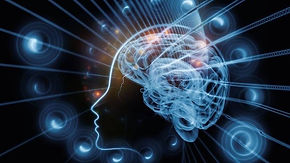
Seed of Change Counseling & Neurotherapy Services
Seed of Change Counseling & Neurotherapy Services
What is Neurotherapy?
What is Neurotherapy?
Nothing more then learning
Nothing more then learning
A self-regulatory treatment to normalize and optimize brain functioning. Brainwave activity is monitored, electronically, from electrodes (sensors) placed on the scalp. The neurotherapist sets conditions that let the client know when brainwave activity is moving in the desired direction. “ Using the principles of operant conditioning, this feedback increases the likelihood of the brain operating in a similar manner more often / more consistently in the future.
Is Neurofeedback an Evidence-Based treatment?
Is Neurofeedback an Evidence-Based treatment?
Research Evidence has reach a Level 4 Efficacy Rating (Efficacious) based on the BCIA / ISNR criteria for Evidenced Based Treatment
a. In a comparison with a no-treatment control group, alternative treatment group, or sham (placebo) control utilizing randomized assignment, the investigational treatment is shown to be statistically significantly superior to the control condition or the investigational treatment is equivalent to a treatment of established efficacy in a study with sufficient power to detect moderate differences.
b. The studies have been conducted with a population treated for a specific problem, for whom inclusion criteria are delineated in a reliable, operationally defined manner
c. The study used valid and clearly specified outcome measures related to the problem being treated
d. The data are subjected to appropriate data analysis
e. The diagnostic and treatment variables and procedures are clearly defined in a manner that permits replication of the study by independent researchers
f. The superiority or equivalence of the investigational treatment has been shown in at least two independent research settings.

Side effects? Length of treatment?
Side effects? Length of treatment?
Side effects are very rare (only 12-14% of patients report any side effects at all)
When side effects do occur, they are:
Mild (i.e. headache, sense of agitation)
Temporary (i.e. a couple hours to a couple of days at the most)
Remember: Neurofeedback is simply learning!!!
20-40 sessions for most presenting concerns
Complicated / multiple issues can require 40-100+ sessions

What is Neurotherapy good for?
What is Neurotherapy good for?
Seizure Disorders Learning Disabilities
ADHD OCD
Traumatic Brain Injuries Addictions
PTSD Peak Performance Training
Sleep disorders Memory Problems
Eating disorders Dementia
Chronic fatigue Depression
Chronic pain Anxiety
Autistic Spectrum Disorders Stroke

Neurotherapy began in the late 1950s and early '60s
Neurotherapy began in the late 1950s and early '60s
Through the work of both Dr Joe Kamiya at the University of Chicago and Dr Barry Sterman at UCLA.
Dr. Kamiya was studying consciousness, and discovered that by using a simple reward system, people could learn to alter their brain activity. This was the first ever EEG neurofeedback training.
Along similar lines, Dr. Sterman ran an experiment to see if cats could increase their sensory motor rhythm (SMR). A simple machine gave them a food pellet every time they 'got it right', and they quickly learned to control their brainwaves to get the treat.